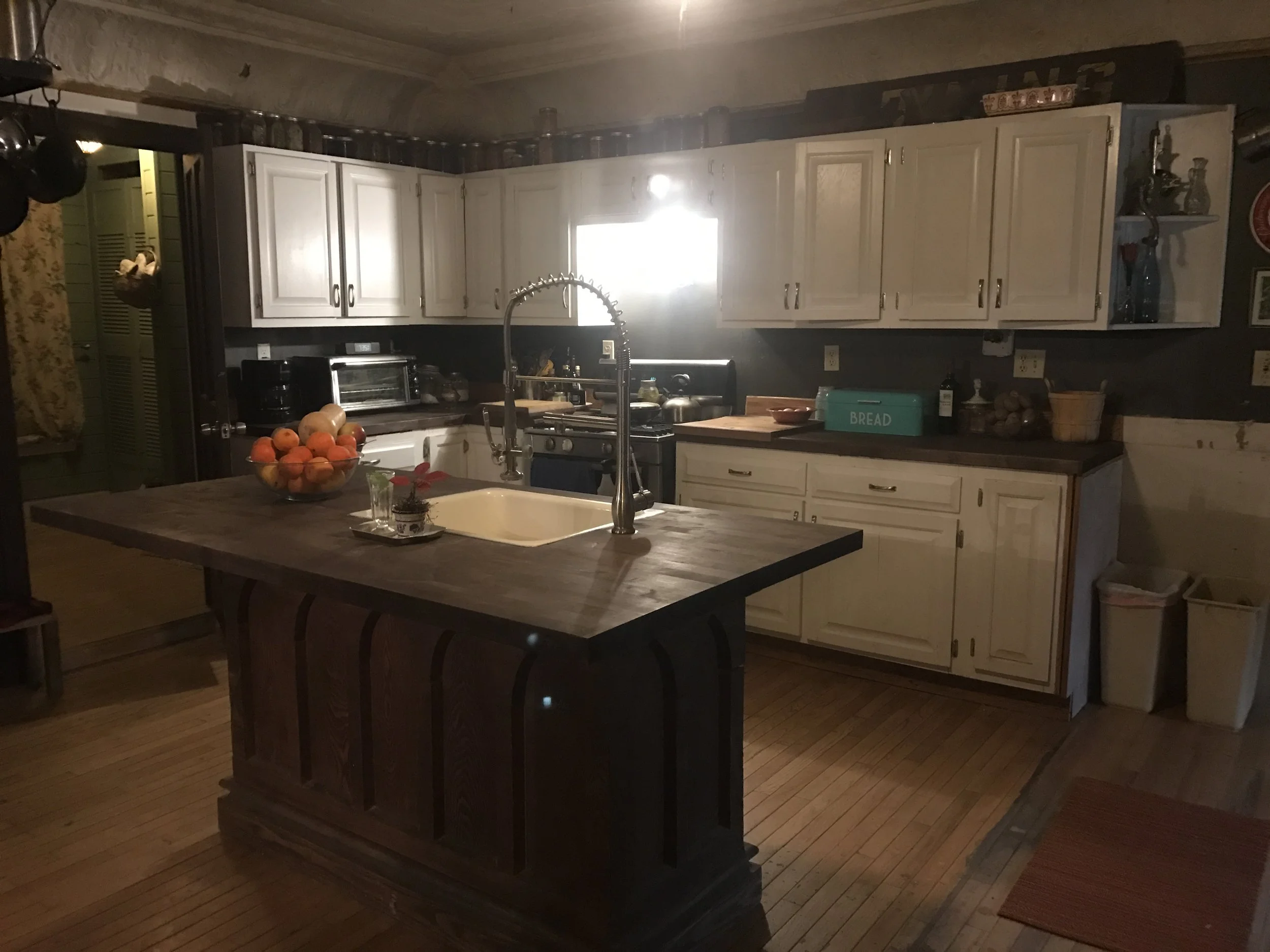Better Farm is up to two totally off-grid structures, the Birdhouse (powered with a small DIY solar setup and built with locally mined wood) and the Greenhouse (built with donated old windows and locally mined lumber, and utilizing passive solar).
But our biggest project to date, the Art Barn, is a task totally unlike the other two in that it involves a complete overhaul of an existing, on-grid structure: taking a 1,400 square-foot hay barn and transforming it into a totally green, state-of-the-line artspace, studio, and gallery. We've utilized found materials, upcycled items like overstock and/or discarded windows from a local hardware store and storage lockers marked for the dump over at Fort Drum, done much of the work ourselves, sought out energy efficient means to power the space, and scheduled our first on-site visit next week with
One Block of the Grid for our upcoming 10-panel solar system.
All of this is very well and good, but left out a major player in any renovation project: Insulation.
For smaller projects in and around the house, we've utilized 100% recycled cotton batting insulation, which is so eco-friendly and nontoxic you can actually rub your face in it. Makes for a very pleasant change from the days of masks, gloves, and long sleeves and pants to avoid fiberglass fill and other nasties.
Disadvantages to the recycled batting insulation are cost and effectiveness—the stuff we got from Lowe's was only R-19. So I began looking into other green options. Spray-in fiber fill is good and cheap, but continually settles over time
and doesn't add anything to the integrity of your walls. Then I discovered spray foam installation, which can strengthen walls but is often a toxic mix of chemicals you wouldn't want blown your way in a breeze let alone left to sit in the walls that literally surround you.
Then betterArts board member Scott Mueller tipped us off to Demilec.
These guys offer a Heatlok Soy 200 spray foam barrier that adds to the integrity of your walls, seals in all the gaps and cracks that might exist in your structure, is made from recycled plastic bottles and soybeans, and is in general just a totally amazing way to insulate your home or office. For each inch of sprayed soy insulation, you get an Aged R-Value of 7.4 (we're doing three inches on all the walls and the ceiling of the Art Barn's first floor). This insulation also offers five barriers: air barrier, insulation, water barrier, vapor barrier, and drain plane.
The company estimates that its Heatlok Soy 200 sprayfoam helped to keep 12 million plastic bottles out of landfills in the last year alone. It's not cheap, but adding to the barn's strength as a building, offering a great water barrier to the elements, and potentially (with wood stove installation) keeping the Art Barn at a sweet 75 degrees all winter long are all very attractive options.
Needless to say, we've decided to give them a try. Negotiations are underway for our Heatlok Soy 200 application to be completed in the next couple of weeks. We'll of course be documenting the process—and our thoughts—along the way. Stay tuned!
Want to find out more?
Demilec USA
1BOG Home Solar Power Discounts
Photos of Better Farm's Art Barn renovation so far








































































































































































